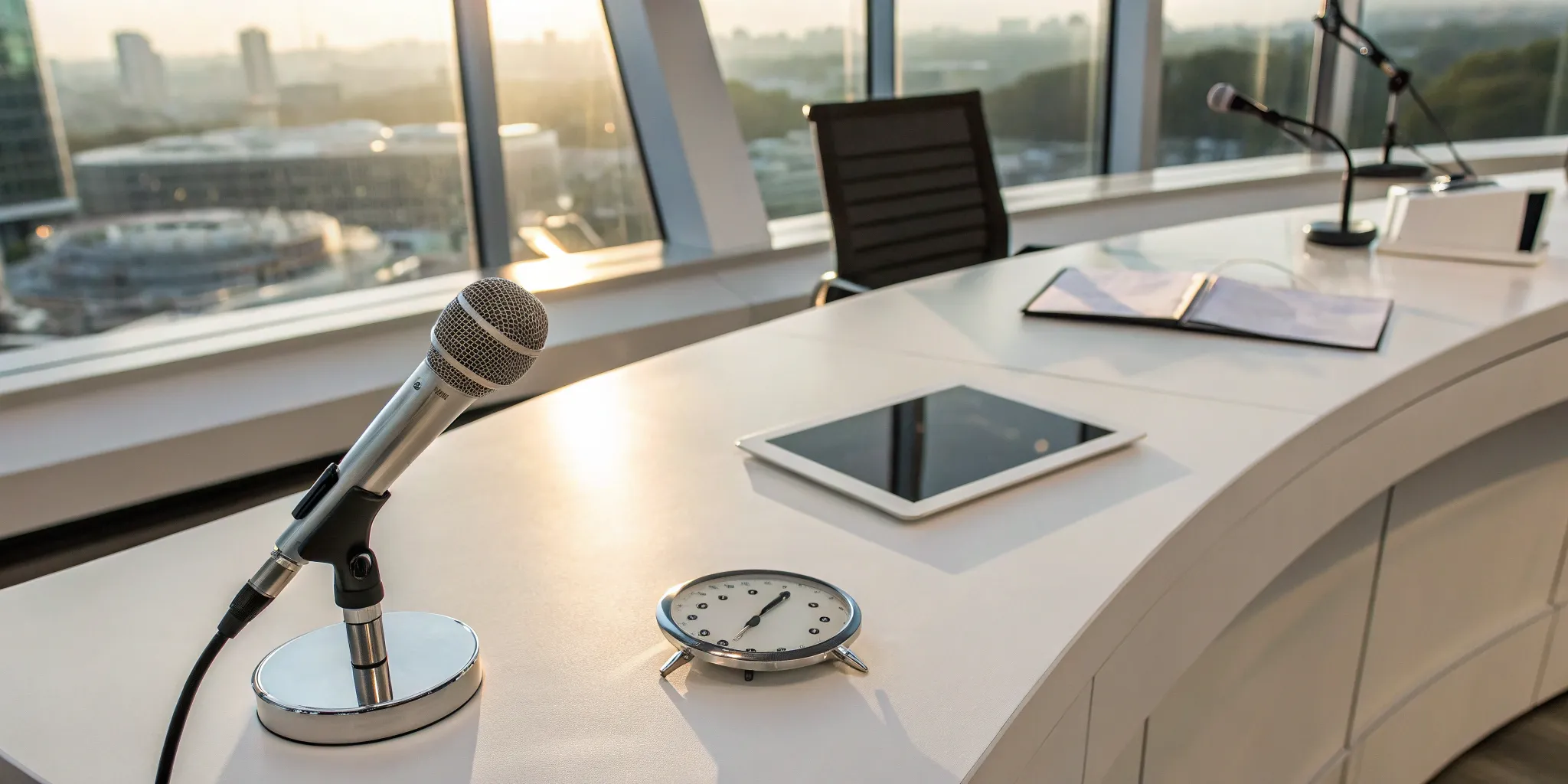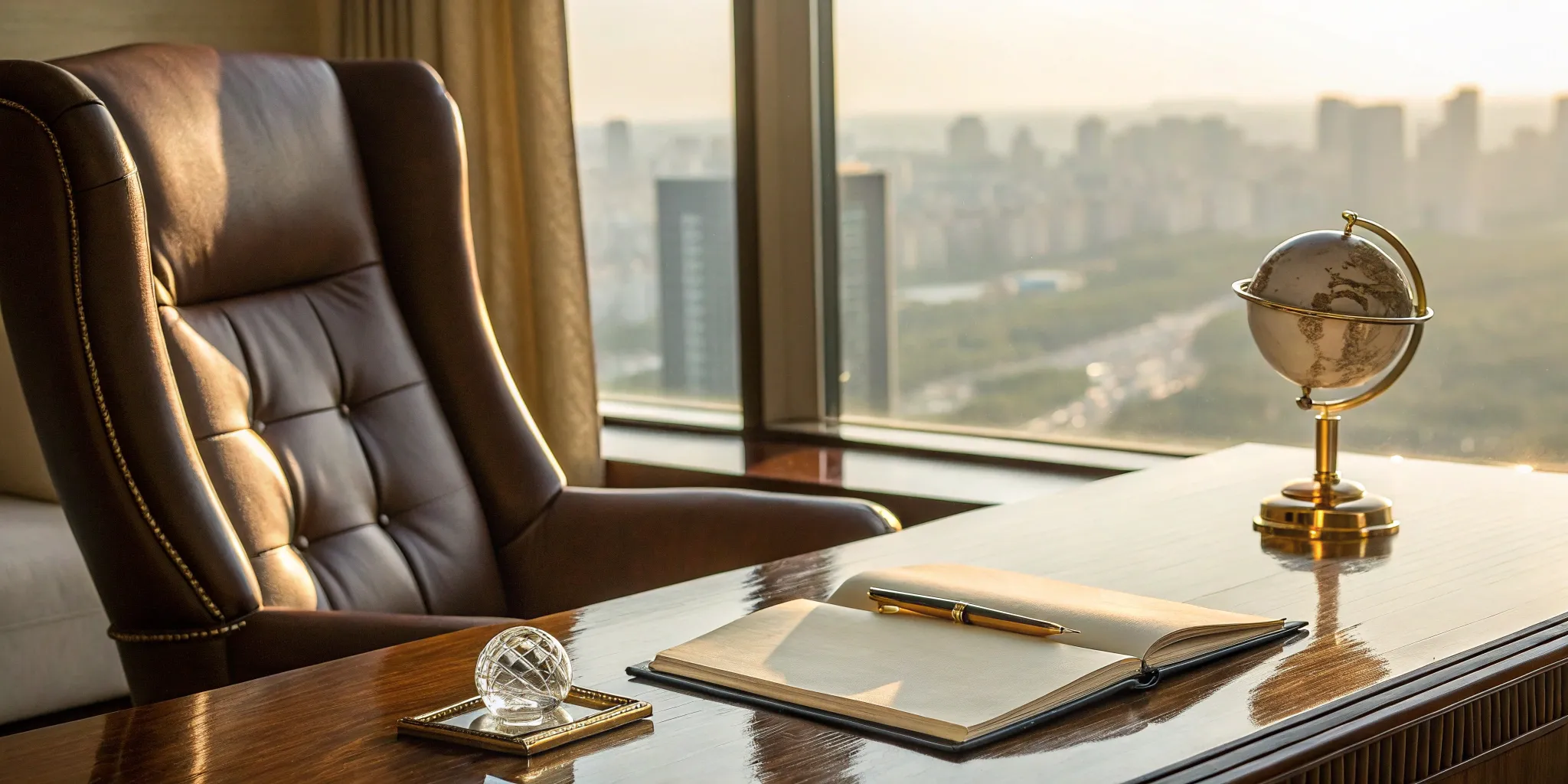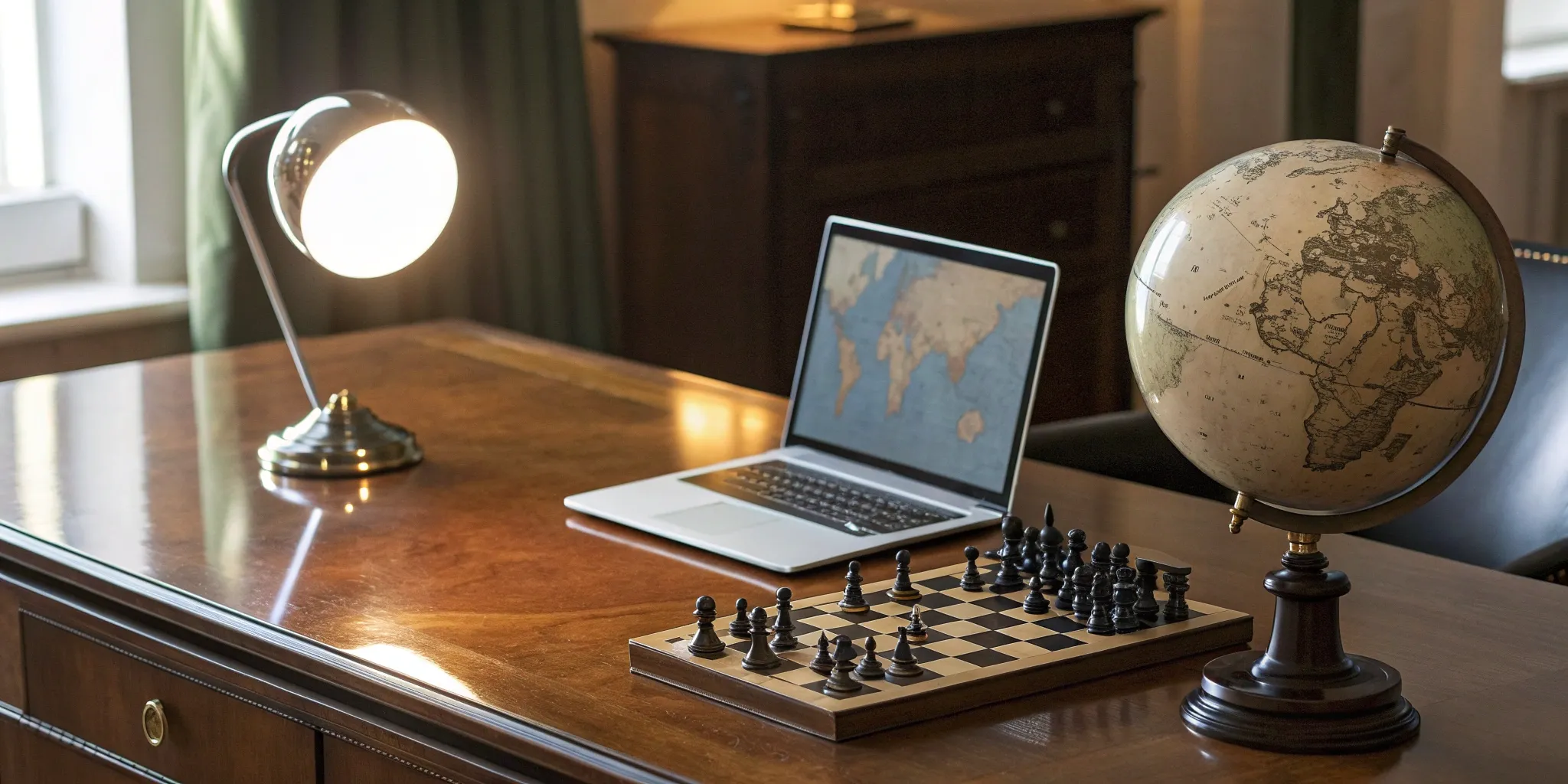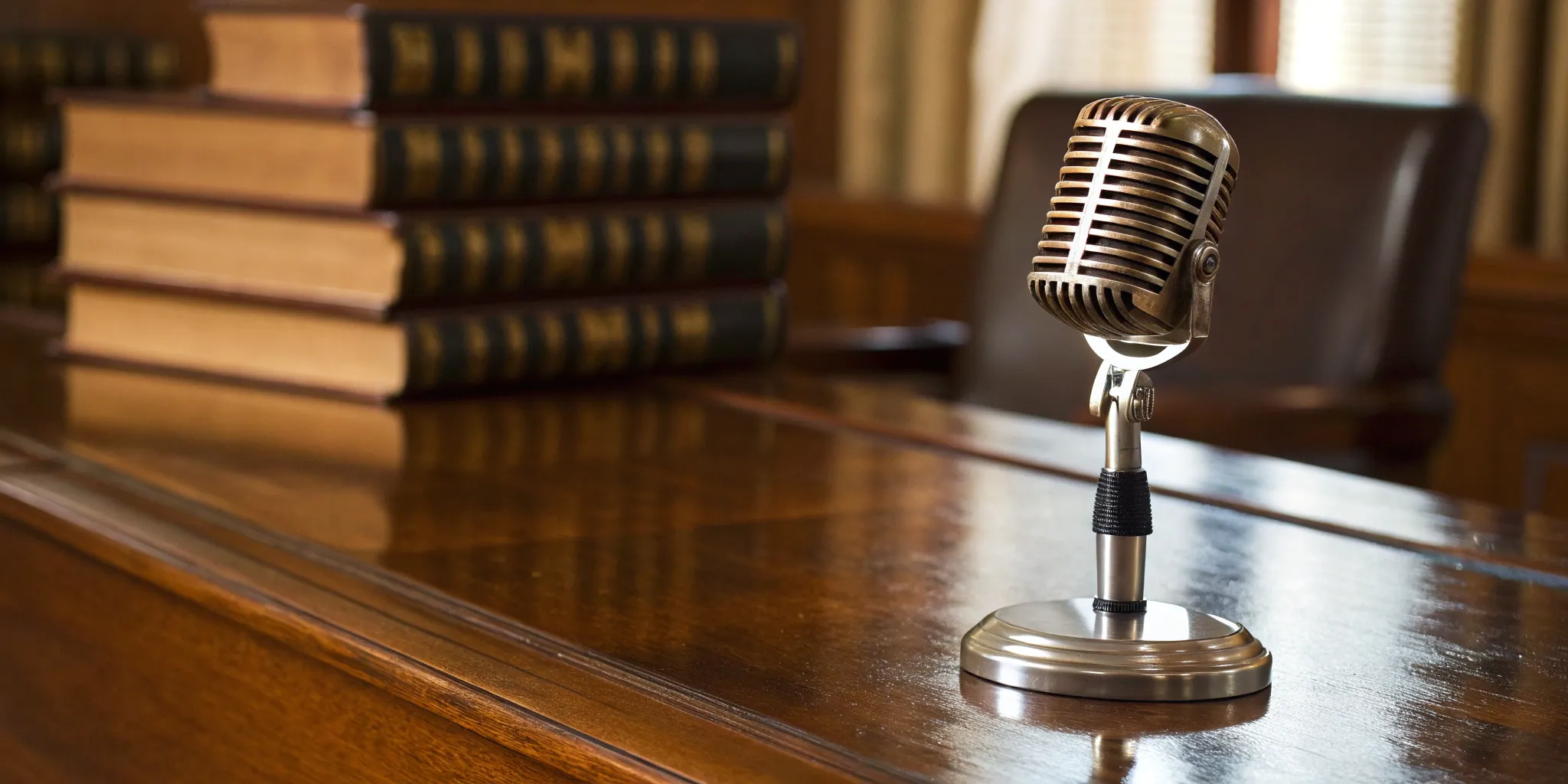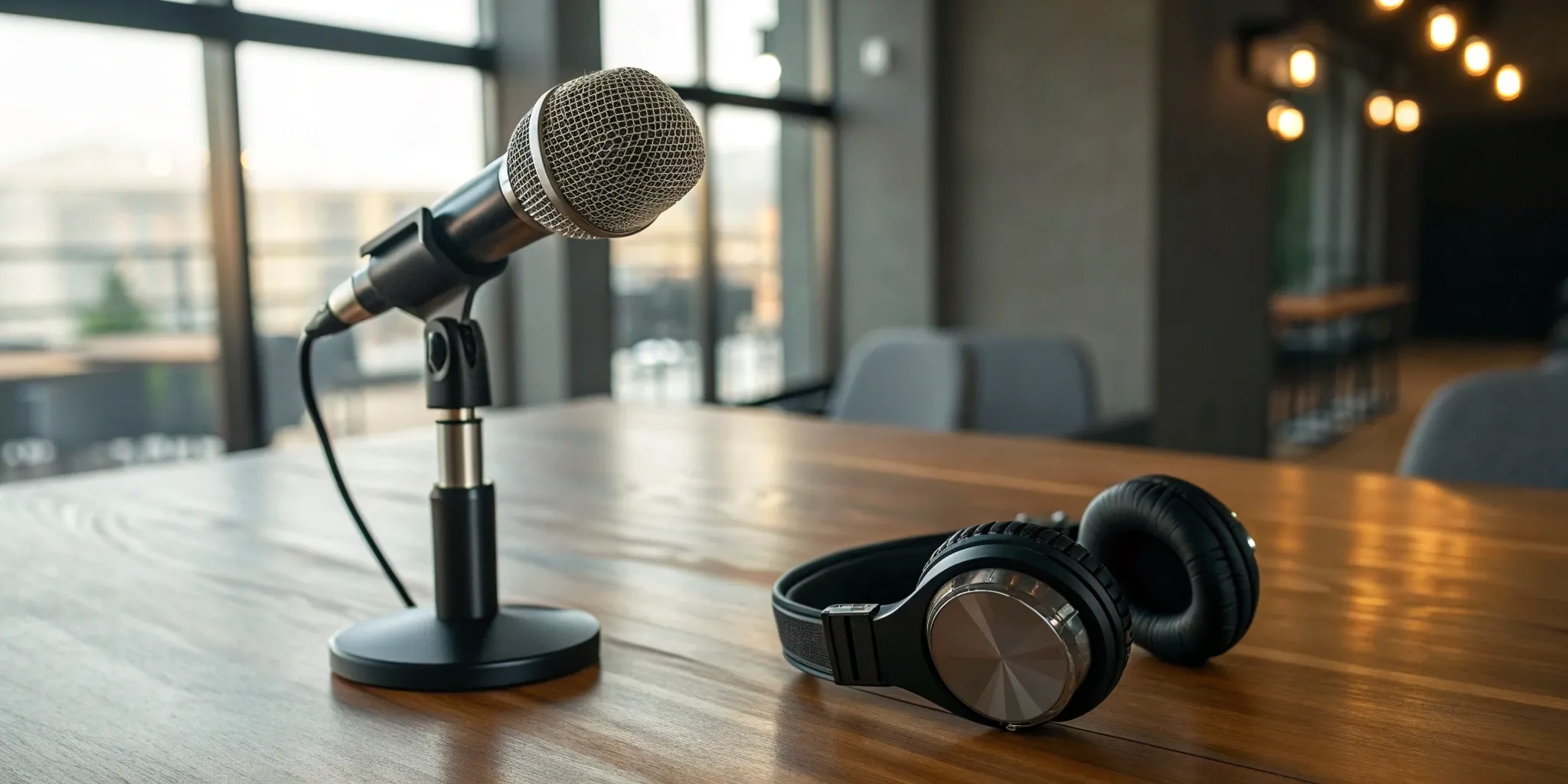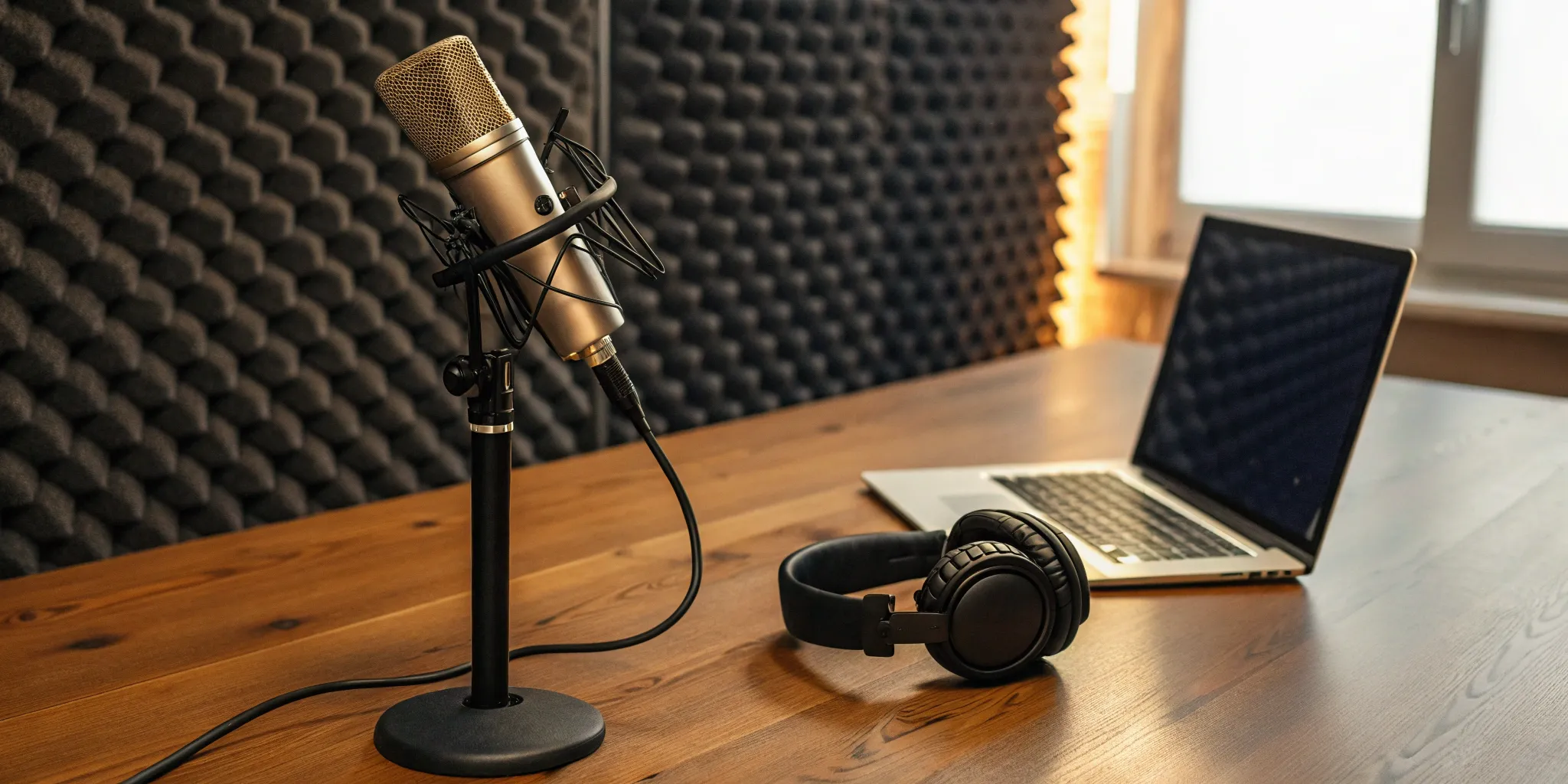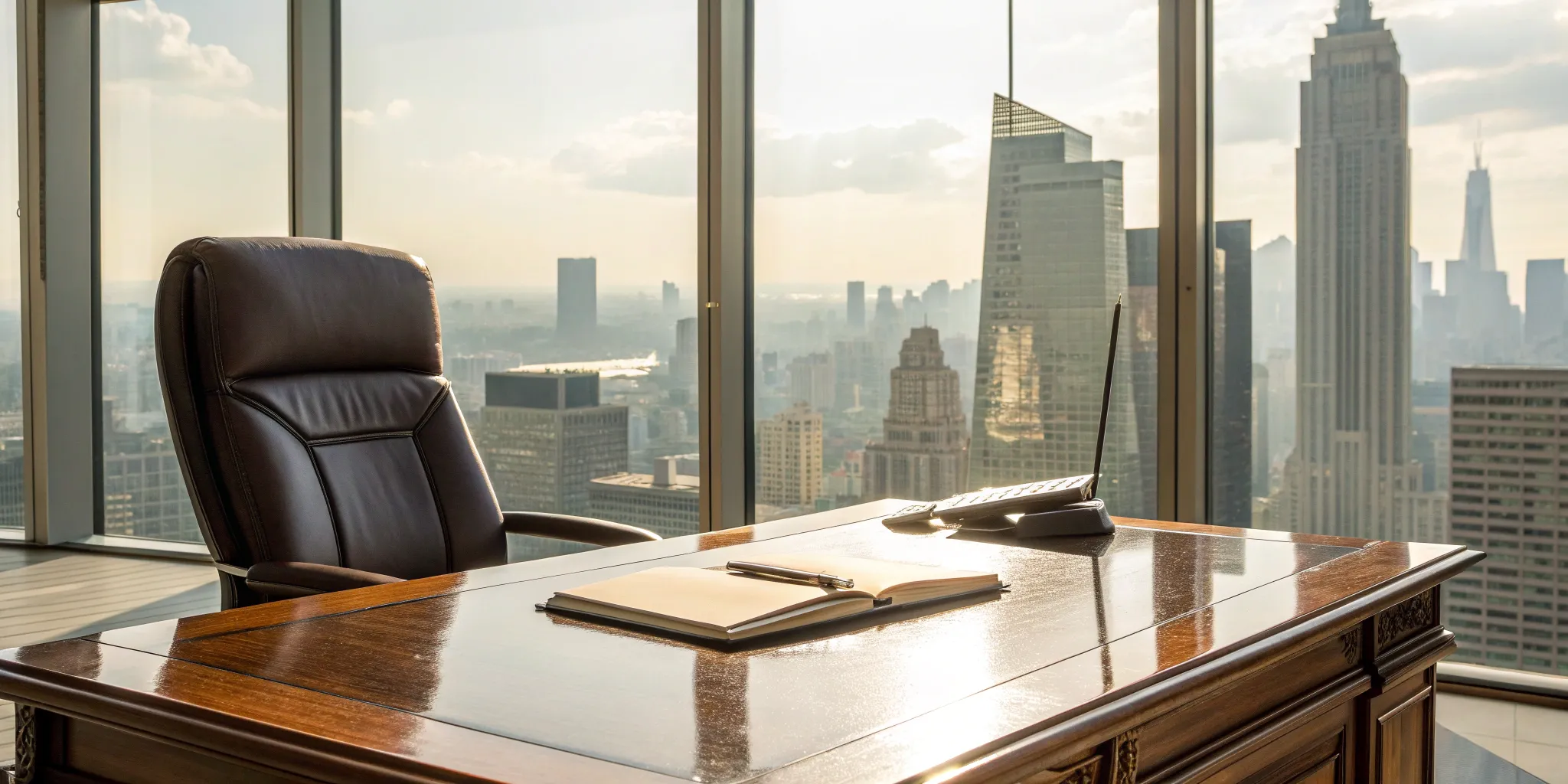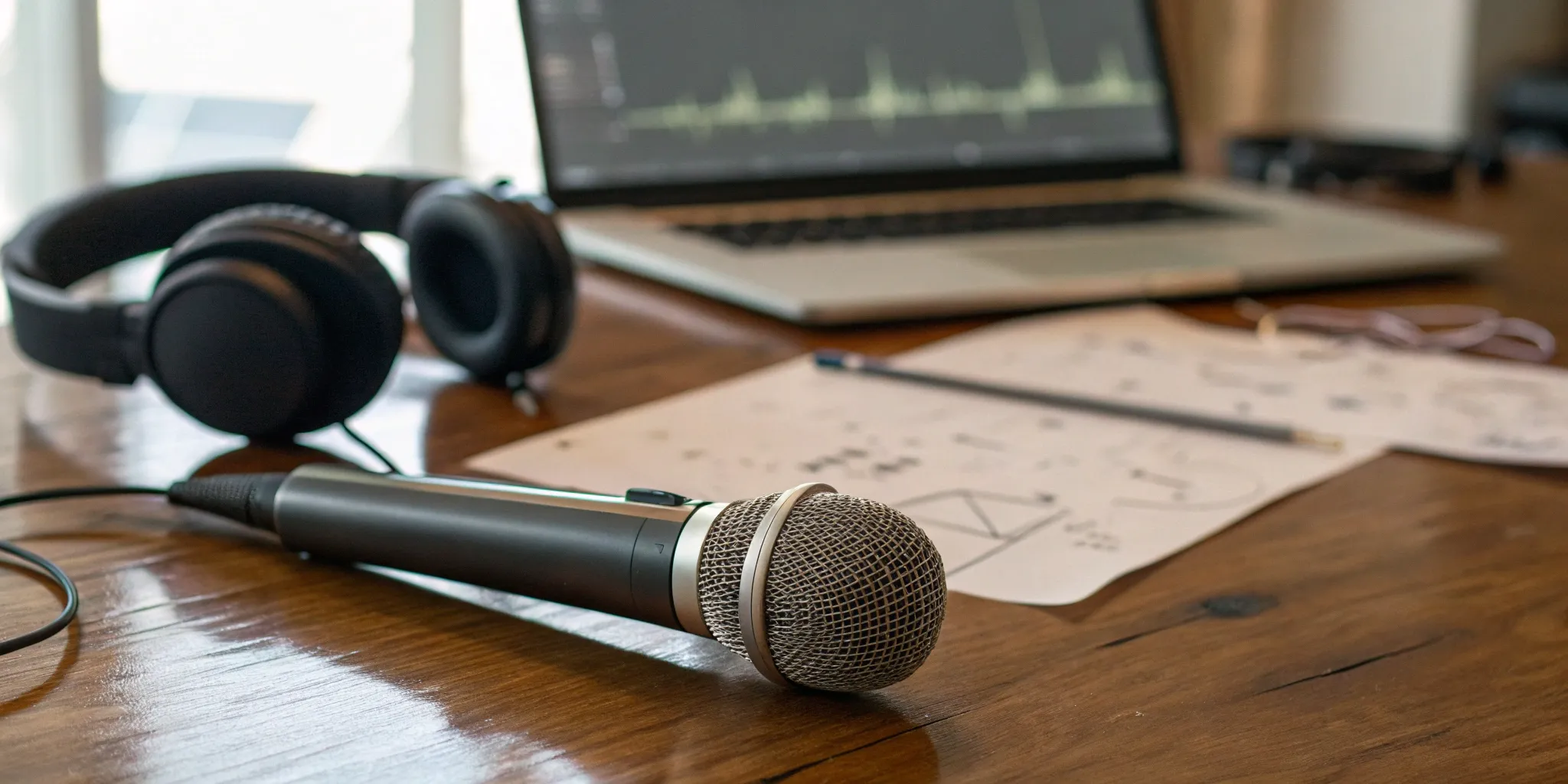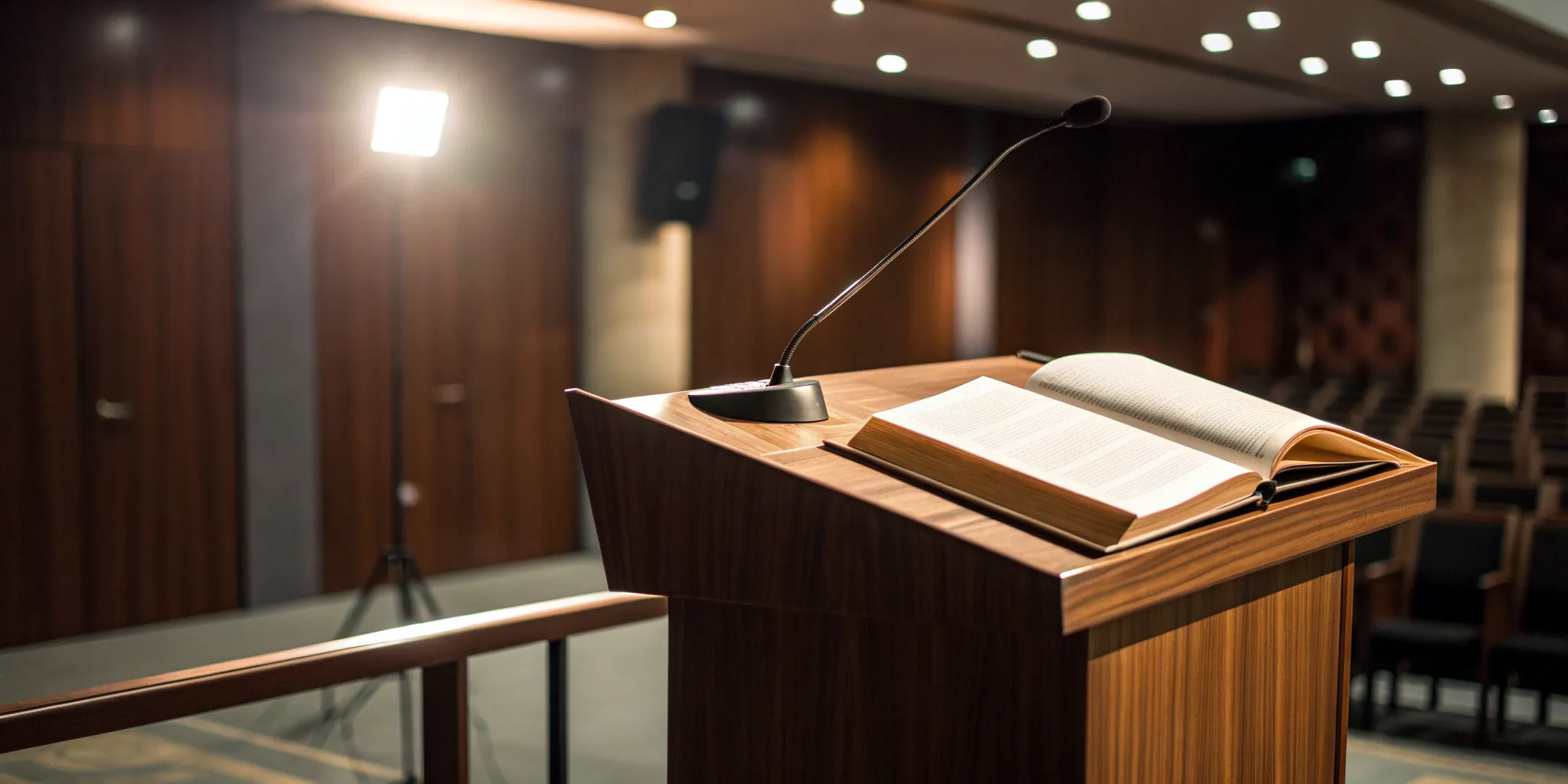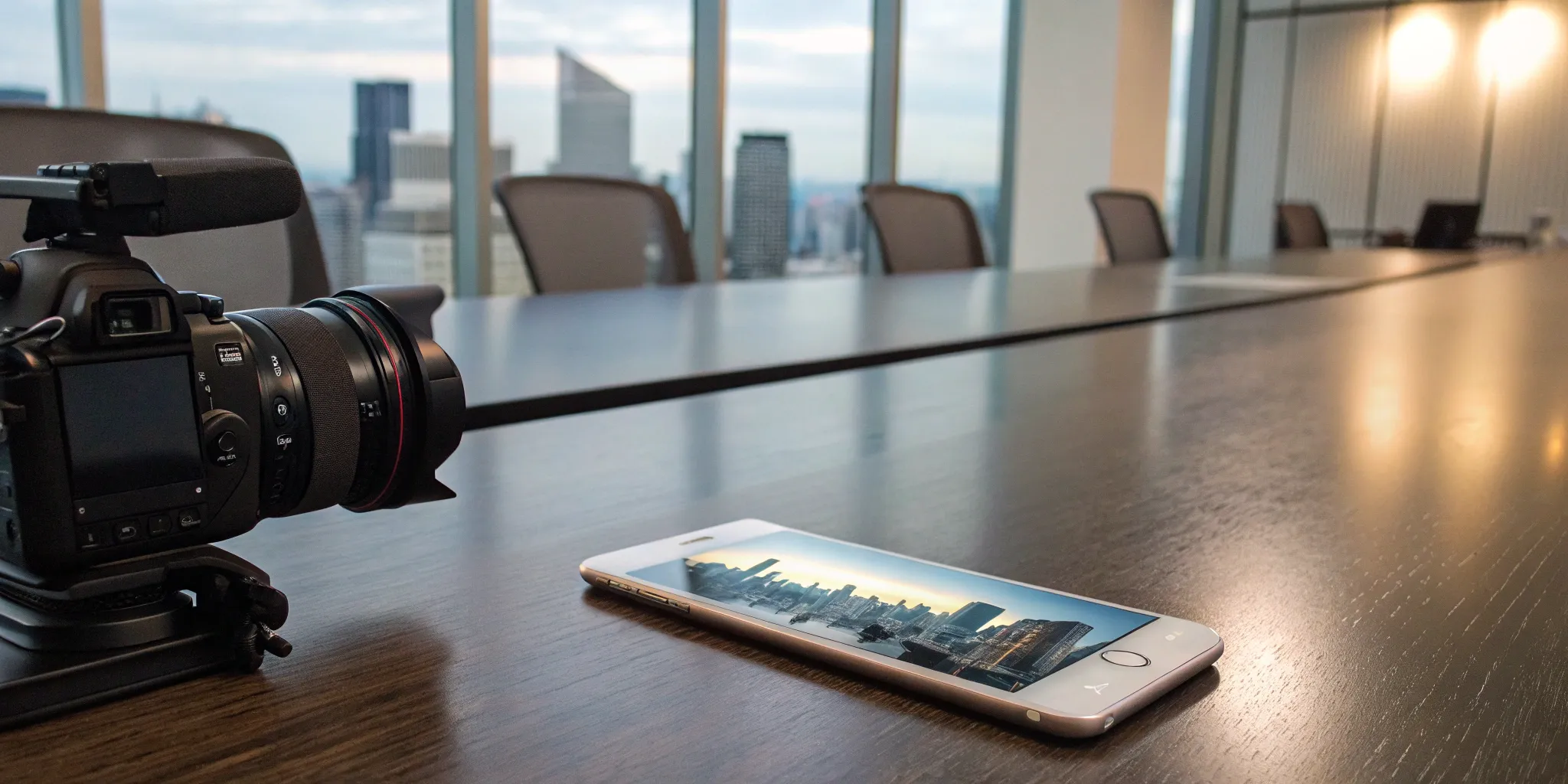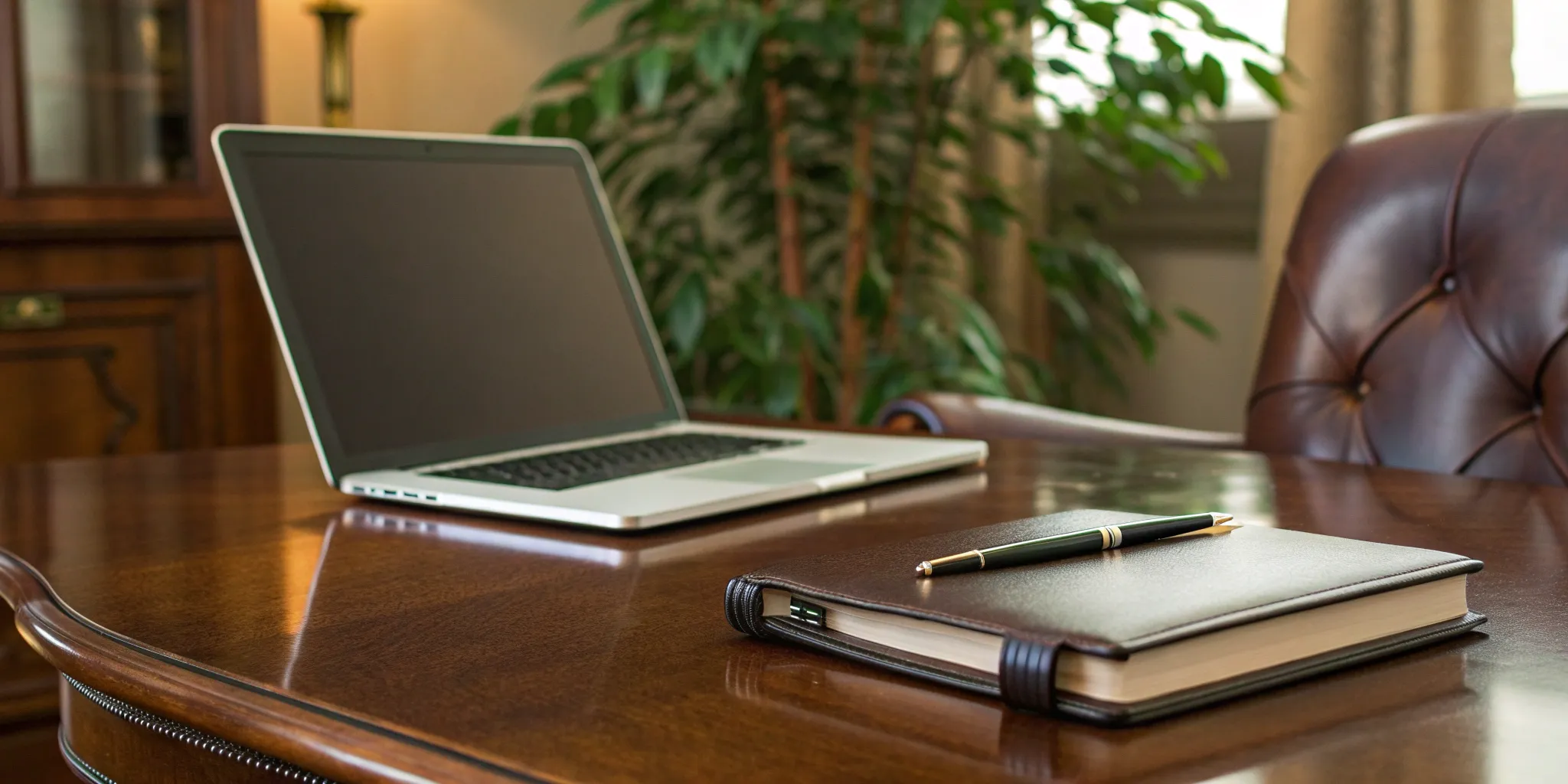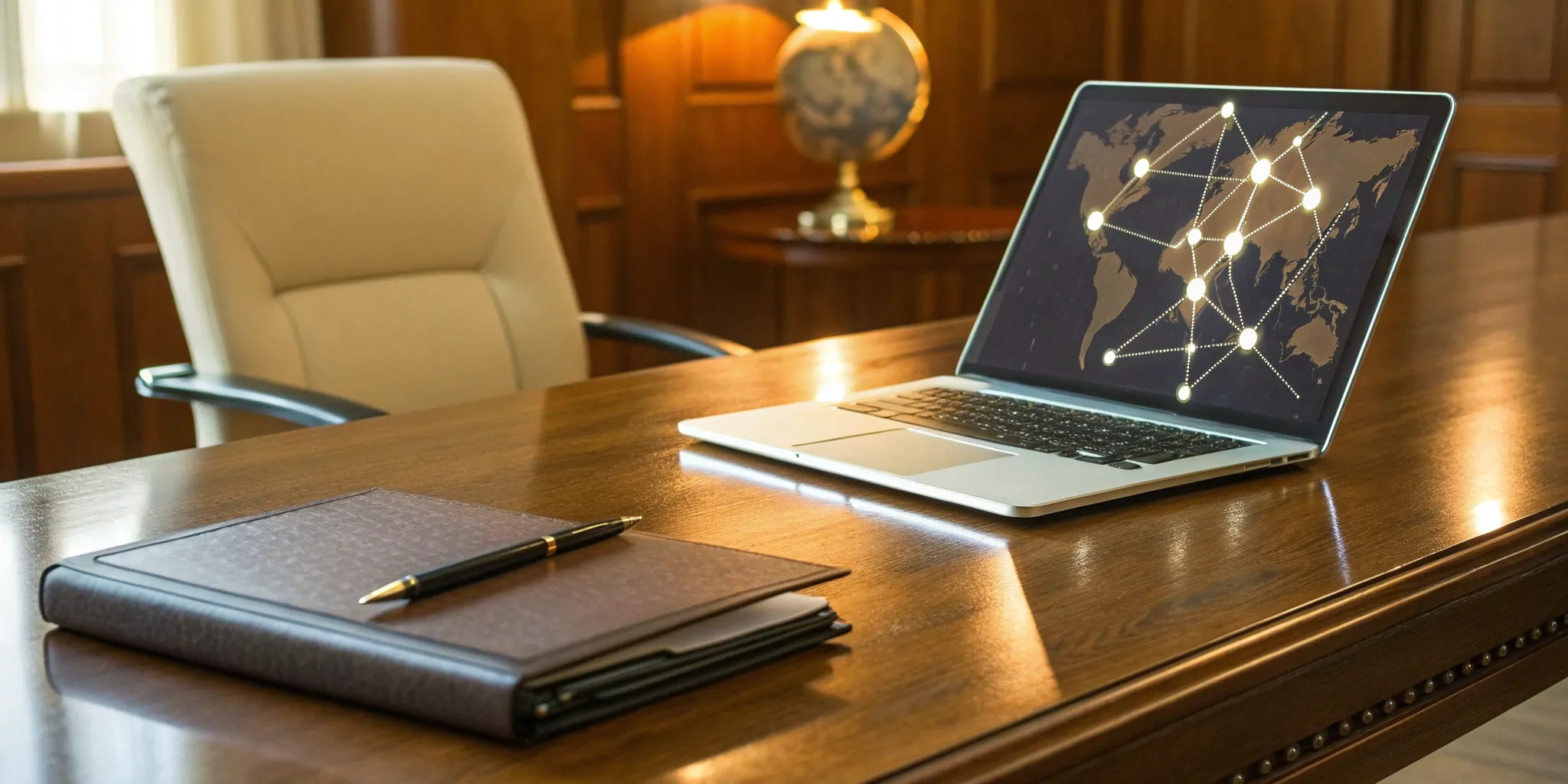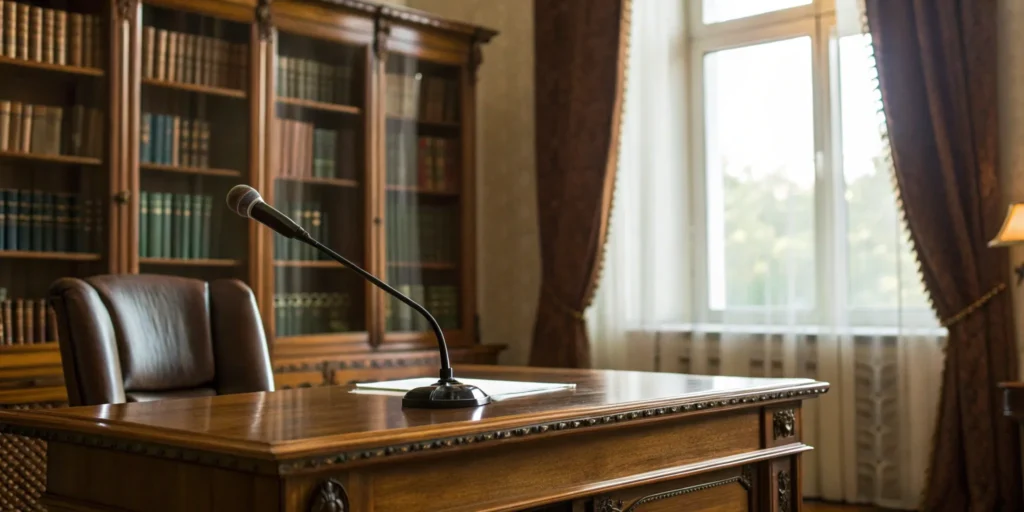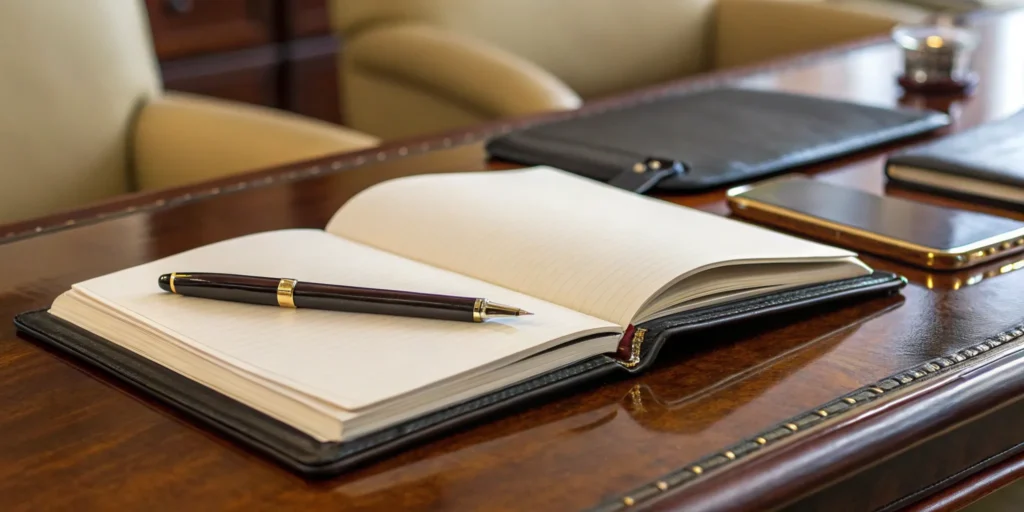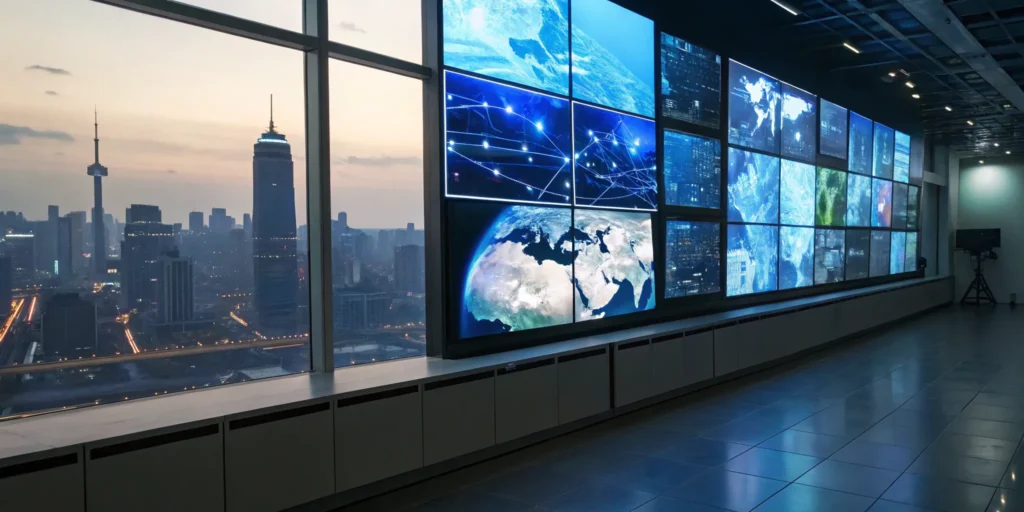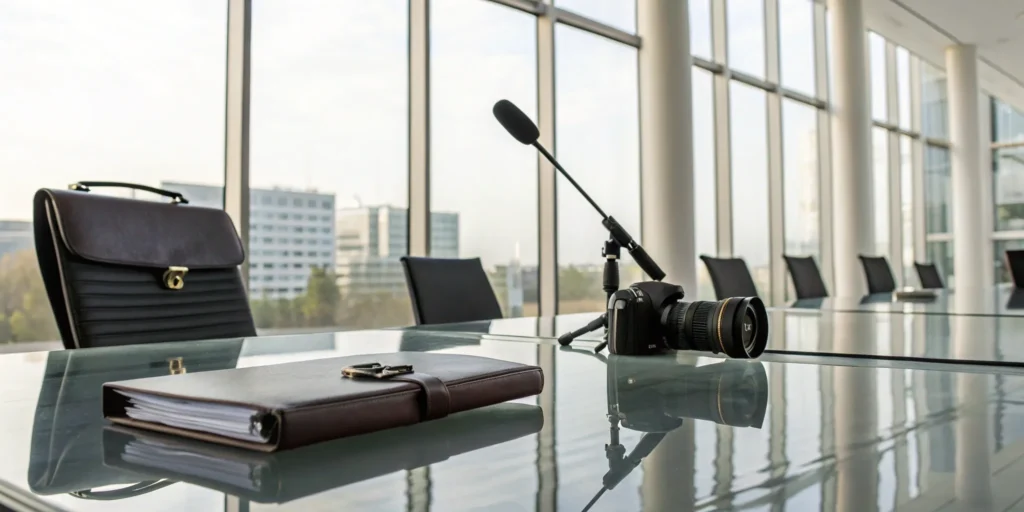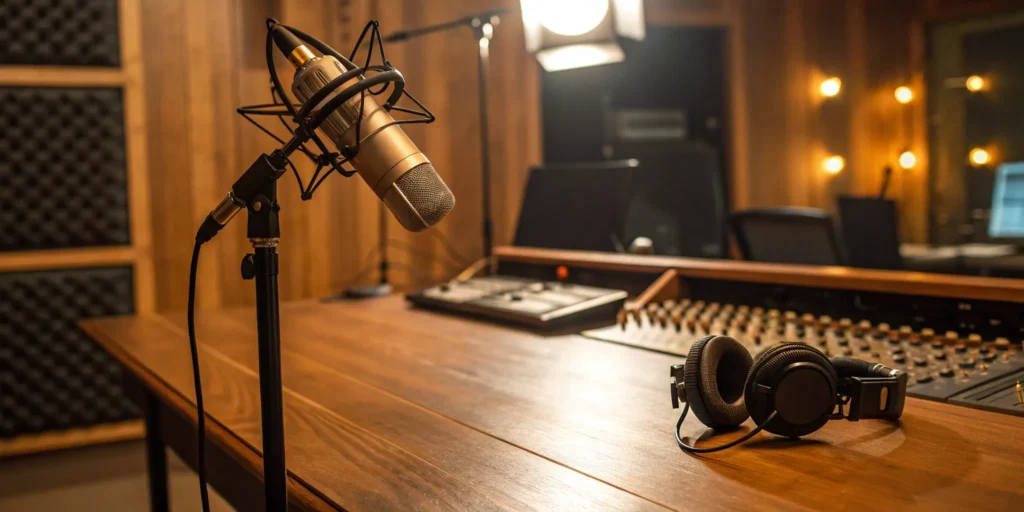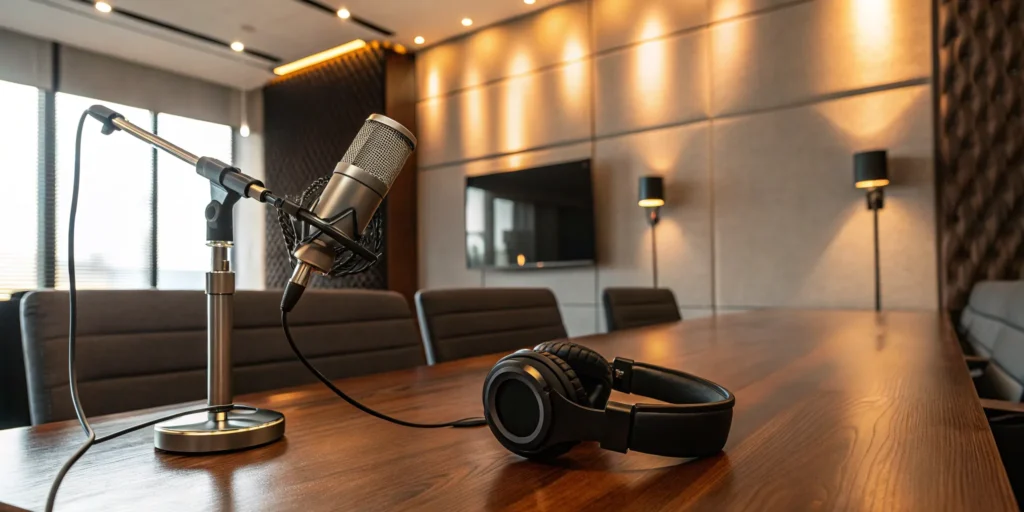Too often, leaders only consider media training when a crisis is already brewing. By then, it’s too late. You’re playing defense, trying to repair damage rather than build a positive narrative. The most effective approach is proactive. Think of it as building a strong foundation of trust and credibility long before you face a storm. Investing in CEO media training when things are going well is a core part of a smart brand strategy. It prepares you to shape your public perception from a position of strength, turning every media opportunity into a chance to reinforce your values, connect with your audience, and solidify your reputation as a thoughtful and reliable industry leader.
Key Takeaways
- Use Media Training to Shape Your Narrative: Think of media training as a proactive tool for building your brand, not just a defensive measure for a crisis. Every interview is a chance to control the conversation and reinforce the key messages that build public trust.
- Align Your Words and Body Language: How you deliver your message is often more impactful than the words themselves. Effective training teaches you to align your tone, posture, and nonverbal cues with your message to project confidence and authenticity across any platform.
- Make Media Readiness an Ongoing Practice: Media skills require consistent effort to stay sharp, just like any other core leadership competency. Commit to regular practice and coaching sessions to ensure you’re always prepared to handle new challenges and opportunities effectively.
What is CEO Media Training?
Think of media training as strategic communications coaching for leaders. It’s the work you do behind the scenes to ensure that every time you speak to a reporter, appear on television, or join a podcast, you represent your company with clarity, confidence, and control. It’s not about learning to recite sterile talking points or becoming someone you’re not. Instead, it’s about mastering the art of the interview so you can tell your story effectively, no matter the circumstances. It gives you a framework for handling any question while staying true to your core message and your authentic voice.
Effective media training prepares you for any scenario, from a friendly chat about your company’s latest success to navigating tough questions during a crisis. The goal is to equip you with the skills to stay on message, connect with your audience, and build trust. It transforms a potentially nerve-wracking media appearance into a powerful opportunity to shape your brand’s narrative. By investing in this preparation, you ensure that your message is not only heard but also understood and remembered for all the right reasons. It’s a fundamental part of modern leadership and a non-negotiable for any executive in the public eye.
What It Involves
Media training is an active, hands-on process designed to simulate real-world media interactions in a safe and constructive environment. It’s not a passive lecture; it’s a workshop where you’ll practice being interviewed on camera, on the phone, and for print. A typical session involves a coach playing the role of a journalist, asking you a range of questions from softballs to hard-hitting inquiries. These mock interviews are often recorded so you can review them with your coach. This feedback loop is where the real learning happens. You’ll identify nervous tics, refine your key messages, and practice techniques for bridging back to your main points. The entire media training process is tailored to your specific needs, focusing on the types of media you’re most likely to encounter.
The Psychology of Public Perception
When you communicate, your words are only a small part of the equation. Research has famously shown that communication is 55% body language, 38% tone of voice, and only 7% the actual words you use. This means how you deliver your message is often more impactful than the message itself. Media training dives deep into this psychology, teaching you to align your non-verbal cues with your verbal message. This is crucial for building trust. If you’re delivering positive news but your body language appears tense or defensive, your audience will pick up on the disconnect. A skilled media coach helps you master open and confident body language, maintain a steady and reassuring tone, and make eye contact that connects with viewers. Understanding these elements of executive communication allows you to project authenticity and credibility, ensuring your audience doesn’t just hear you—they believe you.
Common Myths, Busted
Several misconceptions prevent leaders from getting the training they need. One of the biggest is that it’s only for beginners. The truth is, even the most confident and charismatic CEOs benefit from media training. A media interview isn’t a normal conversation; it’s a performance with its own set of rules. Regular training keeps your skills sharp and prepares you for new challenges. Another common myth is that training will make you sound robotic or inauthentic. A good program does the exact opposite. It helps you shed corporate jargon and nervous habits, giving you the confidence to let your genuine personality come through. Finally, many believe training is only for the CEO. While the leader is crucial, training other key executives creates a strong, unified voice for the company. Busting these media training misconceptions is the first step toward building a stronger public presence.
Why Media Training is Non-Negotiable for Executives
As a leader, you are the primary spokesperson for your brand. Every time you step in front of a camera, microphone, or journalist, you carry the weight of your company’s reputation on your shoulders. It’s a huge responsibility, and it’s why simply “winging it” is not an option. Media training isn’t about creating a polished, robotic version of yourself; it’s about equipping you with the skills to be your most authentic, confident, and effective self under pressure. It transforms media appearances from a source of anxiety into a powerful opportunity to shape your narrative and connect with your audience on your own terms.
Protect Your Company’s Reputation
One off-the-cuff remark or fumbled answer can spiral into a PR crisis that takes months, or even years, to repair. In the public eye, your words are your company’s words. Without proper training, it’s easy to get caught off guard, misspeak, or inadvertently share information that can damage your brand’s credibility. Media training provides you with a framework for staying on message, handling difficult questions gracefully, and ensuring every interview reinforces your company’s values. It’s the ultimate tool for reputation management, giving you the control to safeguard the brand you’ve worked so hard to build.
Build and Maintain Public Trust
Trust is the foundation of any successful business, and it’s built through consistent, clear, and authentic communication. Every media interview is a chance to strengthen that foundation. When you can articulate your vision with confidence and answer questions with transparency, you build a powerful connection with your audience, investors, and stakeholders. Media training helps you refine your core messages so they resonate deeply, turning every public appearance into an opportunity to reinforce why people should believe in you and your company. It’s about showing up as a reliable, credible leader people want to follow and support.
Prepare for Any Crisis
Challenges are an inevitable part of running a business, and a crisis can strike when you least expect it. How you communicate during these high-stakes moments can either stabilize the situation or make it exponentially worse. Media training is your preparation for the unexpected. It teaches you how to remain calm under pressure, deliver a clear and reassuring message, and guide the narrative with authority. Having a solid crisis communication plan is essential, and being trained to execute it flawlessly ensures you can lead your company through turbulence with confidence and emerge with your reputation intact.
The Tangible ROI of Training
Viewing media training as a cost is a mistake; it’s one of the most valuable investments you can make in your brand. A strong media performance can attract investors, win over new customers, and solidify your position as an industry leader. Conversely, a poor showing can have a direct negative impact on your bottom line. By investing in your ability to communicate effectively, you are directly investing in your company’s growth and stability. The confidence and skill you gain will pay dividends across all areas of your business, proving that clear communication is a powerful driver of tangible results.
The Essential Skills You’ll Master
Media training isn’t just about learning to talk to reporters; it’s about mastering the art of communication under pressure. Think of it as a leadership accelerator. You’ll walk away with a concrete set of skills that will serve you in press conferences, investor meetings, and even internal town halls. These are the core competencies that transform a good speaker into a truly compelling and trusted leader. By focusing on these areas, you build a communication toolkit that prepares you for any high-stakes scenario, ensuring your message is always heard exactly as you intend.
Develop and Control Your Message
The foundation of any successful media appearance is a clear, consistent message. Media training teaches you how to distill your complex ideas into memorable soundbites and key talking points. You’ll learn how to speak with clarity and confidence, ensuring your core message shines through, even when faced with challenging questions. This is about taking control of your narrative so you can guide the conversation, rather than letting it guide you. It’s the difference between simply answering questions and strategically communicating what your audience needs to hear. We work with our clients to develop core messages that are authentic, impactful, and ready for any platform.
Master Interview and Bridging Techniques
Have you ever watched an interview where a politician expertly pivots from a tough question back to their talking points? That’s a skill, and it’s called bridging. Media training equips you with proven bridging techniques to gracefully guide a conversation back on track if it starts to stray. You’ll learn how to acknowledge a reporter’s question and then seamlessly transition to the message you want to deliver. This skill is invaluable for maintaining control of the interview, ensuring your key points are covered, and avoiding potential conversational traps that could distract from your objective.
Command the Room with Body Language
What you say is only part of the story. Research shows that communication is overwhelmingly nonverbal—55% body language and 38% tone of voice. Media training brings a sharp focus to your physical presence. You’ll learn how to use posture, gestures, and facial expressions to project confidence, credibility, and warmth. Whether you’re on a TV set or a Zoom call, mastering your nonverbal cues ensures your body language reinforces your message instead of contradicting it. This awareness helps you connect more authentically with your audience and command the room before you’ve even said a word.
Perfect Your Voice and Tone
How you speak can be just as important as the words you choose. Your vocal delivery—including your tone, pace, and volume—dramatically affects how your message is received. Through structured practice and recorded mock interviews, you’ll learn to modulate your voice to convey authority, empathy, and conviction. This training helps you eliminate filler words like “um” and “ah,” speak at a pace that’s easy to follow, and use inflection to emphasize key points. Perfecting your vocal delivery ensures you sound as confident and capable as you are, making your message more persuasive and memorable.
Handle Tough Questions with Confidence
Every leader will eventually face tough, unexpected, or even hostile questions. Media training prepares you for these moments. You’ll gain practical skills for handling difficult questions without becoming defensive, flustered, or evasive. By role-playing challenging scenarios, you learn how to stay calm under pressure, provide thoughtful responses, and reframe negative questions in a positive light. This preparation builds the resilience and confidence needed to face any interview situation head-on, protecting both your personal credibility and your company’s reputation. Ready to build your confidence? You can book a call with us to discuss a personalized training plan.
How to Adapt to Different Media Formats
A successful media strategy recognizes that you can’t use the same playbook for every opportunity. A television interview, a podcast conversation, and a quote for a print article each demand a unique approach. The core of your message might stay the same, but the delivery needs to be tailored to the medium. Adapting your communication style shows that you respect the platform and its audience, which is key to making a genuine connection. Mastering these different formats allows you to be a dynamic and effective spokesperson for your brand, no matter where you show up. Let’s break down how to adjust your approach for the most common media types.
On-Camera: Television Appearances
When you’re on camera, everything communicates—not just your words. Your body language, what you’re wearing, and your background all contribute to the impression you make. The key is to appear confident, credible, and relaxed. Practice making eye contact with the camera to connect directly with the audience. Pay attention to your posture; sitting up straight conveys authority and energy. Whether you’re in a professional studio or broadcasting from your office, ensure your environment is clean, well-lit, and free of distractions. Your on-camera presence is a skill, and like any skill, it improves with preparation and practice.
On-Air: Radio and Podcast Interviews
Without visual cues, your voice becomes your most powerful tool. For radio and podcast interviews, you need to convey enthusiasm, authority, and personality through your tone, pacing, and word choice alone. Speak clearly and at a moderate pace, using vocal inflection to add emphasis and avoid a monotone delivery. Podcasts, in particular, offer an intimate format where you can tell stories and share insights in a more conversational way. The goal is to build a connection with the listeners, making them feel like they’re part of an engaging discussion. Prepare your key points, but be ready to go with the flow of the conversation to sound natural and authentic.
In-Print: Press Interviews
When speaking with a journalist for a print or online article, your words are everything. Reporters are looking for clear, concise, and memorable quotes they can use to build their story. This is where having your core messages down cold is essential. The art is in delivering your points in a way that is both compelling and difficult to take out of context. Think in soundbites. Practice articulating your main ideas in a few powerful sentences. Always assume everything you say is on the record. By providing a journalist with sharp, insightful quotes, you not only get your message across but also become a valuable source they’ll want to return to.
Online: Digital and Social Media
Digital and social media are all about direct engagement and building community. Unlike traditional media, these platforms are a two-way street. Your communication style should be more direct, authentic, and often more informal. The ability to communicate well online has a major impact on your professional reputation and success. Tailor your content for each platform—a thoughtful article on LinkedIn will have a different tone than a quick, engaging update on X. The real power here is in the interaction. Respond to comments, ask questions, and participate in conversations to build genuine relationships and establish yourself as an accessible and modern leader.
Build Your Winning Media Strategy
A successful media appearance doesn’t just happen. It’s the result of a carefully crafted strategy that guides every word you say and every move you make. Think of it as your playbook for any interview or public-facing event. It ensures you’re not just reacting to questions but actively shaping the narrative and leaving a lasting, positive impression. A solid strategy turns a potentially nerve-wracking experience into a powerful opportunity to connect with your audience and strengthen your brand. It’s about moving from defense to offense and taking control of your story. Let’s break down the key components that will form the foundation of your winning media strategy.
Set Clear Communication Goals
Before you step in front of a camera or microphone, you need to know what you want to accomplish. What is the primary objective of this interview? Are you aiming to announce a new product, build trust during a crisis, or establish yourself as a thought leader? Setting clear, specific goals is the first step to a successful media interaction. These objectives become your North Star, guiding your messaging and helping you measure the success of your appearance afterward. Without a clear goal, you risk rambling or getting sidetracked by the interviewer’s agenda. Define what you want your audience to think, feel, and do after hearing you speak.
Develop Your Core Messages
Once you have your goals, it’s time to craft your core messages. These are the two or three key takeaways you want your audience to remember, no matter what. Think of them as the pillars of your conversation. Your core messages should be concise, compelling, and aligned with your brand’s values. A huge part of this process is anticipating the tough questions and preparing strategic, on-brand responses that bridge back to your key points. Having these messages locked in gives you a solid foundation, ensuring you communicate with clarity and confidence and build trust with stakeholders.
Establish Response Protocols
The media landscape can be unpredictable, so you need a plan for various scenarios. Establishing response protocols means preparing for the unexpected, from a technical glitch during a live interview to a hostile line of questioning. This is where personalized coaching becomes invaluable. By working through potential challenges, you can develop a framework for how to respond calmly and professionally, ensuring you always maintain control of the interview. This preparation equips you to handle different media situations with grace, protecting both your personal reputation and your company’s brand image. It’s about having a plan so you can think on your feet without stumbling.
Refine Through Practice and Role-Playing
You wouldn’t give a major keynote without rehearsing, and a media interview is no different. Practice is essential for building the confidence and muscle memory needed to perform well under pressure. Structured mock interviews that simulate real-world scenarios are one of the most effective ways to prepare. This isn’t about memorizing a script; it’s about internalizing your core messages so you can deliver them naturally and authentically. Engaging in multiple practice sessions allows you to refine your answers, perfect your bridging techniques, and get comfortable with the format, ensuring you’re ready to communicate effectively when it counts.
Define Your Visual Presentation
How you look is just as important as what you say, especially in visual mediums like television or online video. Your visual presentation—your attire, grooming, and background—sends a powerful message before you even speak a word. It’s crucial to define a look that is professional, authentic, and appropriate for both the outlet and your brand. Overlooking the importance of your appearance is a common mistake that can undermine your credibility. A well-thought-out visual presentation can significantly impact how your message is received, helping you connect with the audience and reinforcing the professionalism of your brand.
Overcome Common Media Challenges
Even the most accomplished leaders can find media appearances intimidating. The bright lights, the rapid-fire questions, and the pressure to represent your brand perfectly can test anyone’s composure. But these challenges aren’t roadblocks; they’re simply hurdles you can learn to clear with grace and confidence. The key is understanding the common pitfalls and preparing for them proactively. From managing the butterflies in your stomach to handling a journalist’s toughest questions, the right training equips you with a reliable toolkit. It’s about transforming potential anxiety into an opportunity to connect with your audience, share your story, and solidify your reputation as a credible, trustworthy leader. With a solid strategy, you can walk into any interview feeling prepared, focused, and ready to make a positive impact.
Manage Nerves and On-Air Anxiety
It’s completely normal to feel a rush of adrenaline before a big interview. The trick is to channel that energy into a powerful performance instead of letting it derail you. The most effective way to do this is through practice that simulates the real thing. Successful media coaching involves structured mock interviews that replicate the pressure of a live appearance. By recording these sessions and reviewing them with a coach, you can identify nervous tics, refine your delivery, and build the muscle memory you need to stay calm and collected when the camera is rolling. This repetition makes the unfamiliar feel familiar, turning anxiety into confident energy.
Stay on Message Under Pressure
When you’re in the hot seat, it’s easy to get sidetracked by a challenging question or a long-winded tangent. That’s why having a few crystal-clear key messages is non-negotiable. This isn’t about memorizing a script; it’s about deeply understanding the core ideas you want to convey. Effective training helps you develop these key messages and practice weaving them into your answers naturally. You’ll learn how to bridge from a difficult question back to your main points, ensuring you control the narrative and that your most important information gets heard, no matter how the conversation unfolds.
Field Unexpected Questions
No matter how much you prepare, a journalist can always throw you a curveball. The ability to think on your feet is a skill, and like any skill, it can be sharpened with practice. Media training isn’t just for beginners; even the most charismatic CEO can be caught off guard. A common myth is that training is only for those who have never been interviewed. In reality, it prepares seasoned executives to handle unexpected questions without missing a beat. You’ll learn techniques to pause, gather your thoughts, and provide a thoughtful response that aligns with your overall message, rather than giving a reactive or defensive answer.
Maintain Your Authenticity
One of the biggest fears executives have about media training is that it will make them sound robotic or rehearsed. It’s a common misconception that the process strips away your personality. In fact, the opposite is true. Good training helps you become more yourself. By eliminating nervous habits, filler words, and communication barriers, it allows your genuine passion and expertise to shine through more clearly. The goal isn’t to create a perfect persona but to give you the confidence to communicate your authentic self effectively and connect with the audience on a human level.
Execute Crisis Communication Tactics
During a crisis, every word matters, and there’s no room for error. This is where media training proves its ultimate value. The skills you build—staying calm under pressure, delivering a clear and consistent message, and handling tough questions with poise—are the bedrock of effective crisis management. Through rigorous practice interviews and feedback, you develop the reflexes needed to respond swiftly and strategically when the stakes are highest. This preparation ensures you can lead with confidence, protect your company’s reputation, and maintain public trust even in the most challenging circumstances.
How to Choose the Right Media Training Program
Finding the right media training program is a lot like choosing any other key business partner. The fit has to be perfect. With so many options available, it’s important to know what to look for so you can find a program that aligns with your specific goals and communication style. A one-size-fits-all workshop won’t cut it when your brand’s reputation is on the line. You need a tailored approach that prepares you for the unique challenges and opportunities you’ll face.
When you start your search, focus on trainers who not only have the right experience but also offer the right methods and support structure. Let’s walk through how to evaluate your options and make a choice that sets you up for success.
What to Look For in a Program
The first step is to find a trainer or agency that understands your industry and your personal brand. Look for someone with a proven track record of working with leaders in your field. Don’t be afraid to ask for case studies or to see their client results. Beyond credentials, you need a personality fit. You’ll be working closely with this person on skills that can feel vulnerable, so you want a coach you trust and respect.
Before you even sign a contract, you should work with them to set clear goals for what you want to achieve. Do you want to prepare for a book launch tour? Handle tough questions about a new product? Or simply feel more confident on camera? A great program will be customized to meet these specific objectives.
Evaluate Different Training Methods
A comprehensive media training program should prepare you for a variety of platforms, including TV, podcasts, and speaking engagements. The curriculum should be built around practical, hands-on exercises, not just theory. The most effective training involves mock interviews that simulate real-world scenarios, from friendly podcast chats to tough investigative journalism questions.
One of the most powerful tools in media training is video playback. As one expert notes, effective training uses video recording and playback to help you see yourself as the audience does. It might feel awkward at first, but it’s the fastest way to identify and correct issues with body language, tone, or filler words. Look for a program that makes this a central part of the process.
Understand the Investment
Media training is a strategic investment in your brand’s reputation and your leadership. It’s not just an expense; it’s insurance against a PR crisis and a tool for building your public profile. The cost of training can vary significantly depending on the trainer’s expertise, the length of the program, and the level of personalization. Some trainers offer one-day workshops, while others provide ongoing coaching retainers.
When you review different training packages, think about the potential return. A single, powerful interview can lead to new business opportunities, attract investors, and establish you as a thought leader. As PR Lab puts it, media training is a smart investment because it ensures leaders can represent their company well in any situation.
Plan for Ongoing Support
Your media skills will need to be sharpened over time, especially as your company grows and your media opportunities evolve. The best media training programs don’t end after a single session. Look for a partner who offers ongoing support to help you prepare for specific events and continue your development. This could be a quick prep call before a big TV appearance or a debrief session after an interview.
Some trainers even accompany clients to media events to provide real-time feedback and support. This kind of long-term partnership ensures you’re always prepared, confident, and ready to represent your brand at your best. When you’re ready to find a partner invested in your success, you can book a call to discuss your long-term goals.
Measure and Improve Your Media Performance
Media training isn’t a one-time workshop you can check off your list. Think of it as you would physical fitness; you don’t go to the gym once and consider yourself in shape for life. The most effective leaders treat media communication as a skill that requires consistent practice and refinement. After you’ve learned the fundamentals, the real work begins: measuring your performance, integrating feedback, and committing to the process of continuous improvement.
This ongoing effort is what separates a good spokesperson from a truly exceptional one. It’s about building muscle memory so that when the cameras are on and the tough questions start flying, you can rely on your training to communicate with clarity, confidence, and control. By actively tracking your progress and scheduling regular tune-ups, you ensure that you’re always prepared to represent yourself and your company in the best possible light. This approach transforms media appearances from a source of anxiety into a powerful opportunity to build your brand and connect with your audience.
Track Key Performance Indicators (KPIs)
You can’t improve what you don’t measure. To gauge the effectiveness of your media training, you need to set clear objectives and track your progress against them. Start by defining what success looks like for you. Is it flawlessly delivering your three key messages? Is it successfully bridging away from a negative question? Or is it maintaining a calm and confident demeanor throughout the entire interview?
After each media appearance or practice session, review the recording and score yourself against these goals. This isn’t about harsh self-criticism; it’s about objective analysis. Note where you excelled and identify specific areas for improvement. This data-driven approach helps you focus your practice on the skills that need the most attention, ensuring your efforts are both efficient and effective.
Implement Feedback for Growth
While self-assessment is valuable, feedback from a trusted advisor is essential for true growth. Structured practice that simulates real pressure is where you’ll make the most progress. We guide our clients through multiple mock interview sessions, recording each one for careful review. This process allows us to provide targeted, actionable feedback on everything from message delivery to body language.
The key is to create a constructive feedback loop. You practice, we review it together, you implement the suggestions, and we run the simulation again. This iterative process helps you internalize new techniques and break old habits. Working with a seasoned PR team gives you an objective perspective, helping you see blind spots you might otherwise miss and building your confidence for the real thing.
Commit to Continuous Development
The media landscape is constantly changing, and so are the expectations of your audience. A talking point that worked last year might fall flat today. That’s why mastering media communication requires a genuine commitment to continuous development. It’s a core leadership skill that deserves a permanent place in your professional growth plan.
Start by honestly assessing your current media communication skills and identifying specific areas you want to strengthen. Are you great in print interviews but nervous on camera? Do you have your key messages down but struggle with unexpected questions? Acknowledging these areas isn’t a sign of weakness—it’s the first step toward mastery. Viewing your media skills as a dynamic part of your executive toolkit ensures you remain an agile and effective communicator.
Schedule Regular Training Refreshes
Even the most experienced spokespeople need a tune-up. Skills can get rusty, especially if you go long periods without media engagement. To stay sharp, it’s wise to schedule regular training refreshes. These sessions are perfect for practicing before a major company announcement, a new product launch, or an important round of interviews.
A refresher can include mock interviews, video playback analysis, and personalized coaching to address any new challenges or goals. It’s a chance to polish your delivery, test out new messaging, and get comfortable with different media formats. By making these sessions a regular part of your routine, you ensure you’re always prepared for the unpredictable and ready to seize any media opportunity. If you’re ready to schedule a session, you can book a call with our team to discuss your needs.
Related Articles
- What Is CEO PR? A Guide for Modern Leaders
- Why CEOs Need Specialized PR Services to Boost Their Brand
- Top CEO Brand Building Agencies to Elevate Your Presence – Leverage With Media PR
- Blog Archives – Leverage with Media PR
Frequently Asked Questions
I’m already a confident public speaker. Why do I need media training? That’s a great foundation to have, but a media interview is a completely different arena than a keynote speech. When you’re on stage, you control the entire narrative. In an interview, you’re in a dynamic conversation with a journalist who has their own agenda. Media training prepares you for that specific challenge, teaching you how to stay on message, handle unexpected questions, and guide the conversation back to your key points, all while under pressure.
Will media training make me sound robotic or inauthentic? This is a common concern, but a good program does the exact opposite. The goal isn’t to turn you into a talking-points machine. It’s to strip away the nervous habits, filler words, and corporate jargon that get in the way of your natural charisma. By giving you a solid framework and building your confidence, training actually frees you up to be more yourself and let your genuine personality connect with the audience.
How long does a typical media training program take? There isn’t a one-size-fits-all answer because the best programs are tailored to your specific needs. A program could be a single intensive half-day session to prepare you for an upcoming book tour, or it could be an ongoing coaching relationship that helps you refine your skills over several months. We design the timeline around your goals, your schedule, and the media opportunities you’re preparing for.
Is media training only useful for crisis situations? While it is absolutely essential for navigating a crisis, that’s only a small part of its value. Think of media training as a proactive tool for growth. It prepares you to take full advantage of positive media opportunities, from launching a new product to sharing your company’s success story. It’s about shaping your narrative to build trust, attract investors, and solidify your position as a leader in your industry.
What’s the difference between preparing for a podcast versus a TV interview? The core message stays the same, but the delivery changes completely. For television, your visual presence is critical, so we focus heavily on body language, attire, and making a direct connection through the camera lens. With podcasts and radio, your voice is your only tool. Training for audio formats hones your vocal tone, pacing, and storytelling ability to create an engaging and intimate experience for the listener.








